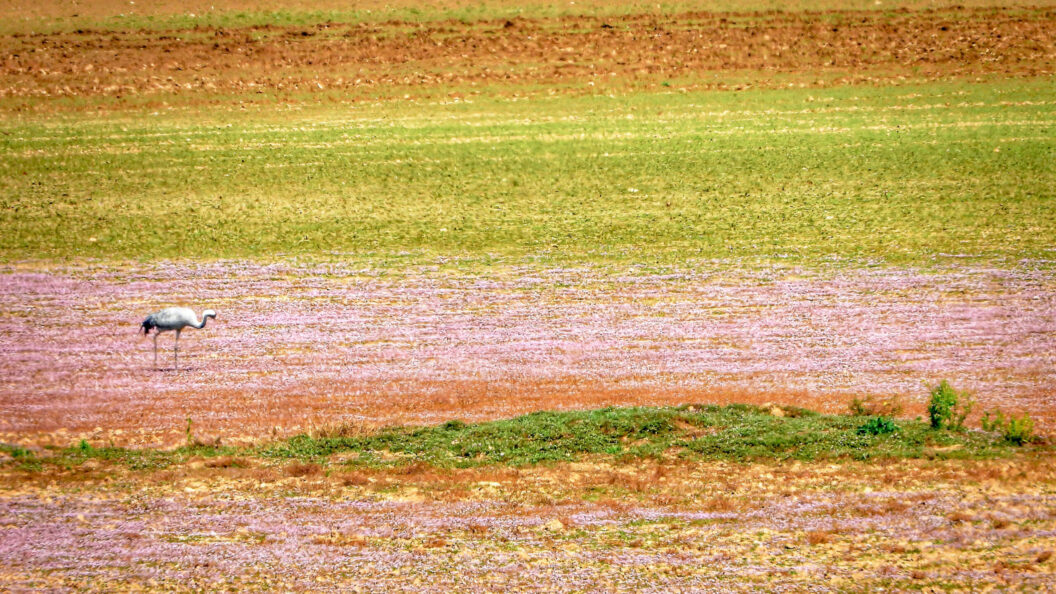Farmers and Conservationists Unite to Protect Waterbirds Amid Climate Crisis
Introduction
As climate change exacerbates environmental instability, the delicate balance between agriculture and wildlife conservation faces unprecedented challenges. Farmers, often apprehensive about hosting bird populations due to concerns over avian flu and crop damage, find themselves increasingly intertwined with the fates of migratory waterbirds. The impact of climate anomalies, such as erratic temperatures and water shortages, complicates food production while simultaneously threatening avian species.
Declining Bird Populations and the Role of Farmers
Recent reports indicate that bird populations in North America are experiencing alarming declines, with waterfowl numbers plummeting by 20 percent since 2014. This trend is reflected in the fact that nearly one-third of wetland-dependent waterbird species are facing similar threats. Conservationists, including biologists, non-profits, and governmental entities, are ramping up collaborative efforts to ensure the survival of these species. As federal support becomes less predictable, especially under the current administration, the necessity for these partnerships is more critical than ever.
Diverse Agricultural Strategies
Different regions require tailored approaches to agriculture and conservation, depending on the local ecosystems. In areas like Louisiana, traditional crawfish-and-rice farming creates habitats that mimic natural wetlands lost to saltwater intrusion from rising sea levels. These farms not only yield crops but also attract diverse bird species during migration, benefiting both agriculture and wildlife.
Elijah Wojohn, a shorebird conservation biologist, notes that biodiverse crawfish-and-rice farms can host up to 50 different species of birds and other wildlife. In contrast, farms that pivot to less water-intensive crops like corn and soybeans may only see a decrease in biodiversity, attracting only a few non-ecological species.
Environmental-Friendly Incentives
Organizations like Ducks Unlimited advocate for innovative financial solutions that benefit both farmers and wildlife. By providing payments for farmers willing to flood fields in winter for migratory birds, these organizations aim to keep rice farmers economically viable while fostering wildlife habitats. In 2024 alone, Ducks Unlimited worked to conserve 1 million acres designated for waterfowl.
Risks of Climate-Induced Changes
Despite these proactive measures, some strategies may inadvertently lead to ecological imbalances. In Central New York, efforts to mitigate risks associated with shrinking winter habitats have resulted in too-high bird populations, putting pressure on local ecosystems. Experts caution against this scenario, emphasizing the need for a sustainable balance between resource availability and wildlife.
International Conservation Initiatives
Conservation strategies now extend beyond national borders. For instance, efforts to protect the buff-breasted sandpiper, which migrates 18,000 miles each year, highlight the need for a holistic approach to migratory bird conservation. Habitat along their migration route, including agricultural lands in Texas and grasslands in South America, is under threat, necessitating international cooperation among conservationist groups.
In Uruguay, Manomet conservation specialists are teaching local ranchers to implement sustainable grazing practices that promote insect populations vital for these migratory birds.
The Case of the Klamath Basin
In the North American northwest, the Klamath Basin serves as a cautionary tale of the extreme challenges faced in bird conservation. Drought has led to catastrophic losses in bird migration counts, prompting initiatives to restore wetland areas. Recent efforts to take down power dams aim to rejuvenate natural water flow, offering hope for both human and avian populations.
Moreover, the prospect of eco-credits for farmers—akin to carbon credits—could incentivize wetland restoration efforts, making these initiatives economically beneficial for agricultural operations.
Conclusion: A Race Against Time
As traditional habitats continue to vanish and climate change accelerates, urgent questions arise about whether conservation measures can be implemented swiftly enough to make a difference. The challenges posed by climate change are formidable; however, collaborative efforts between farmers and conservationists underscore a commitment to safeguarding both agricultural and wildlife interests.
The interplay between farming practices and avian conservation exemplifies a critical intersection of environmental stewardship and agricultural sustainability—an intersection that will be vital for future food security and biodiversity.








